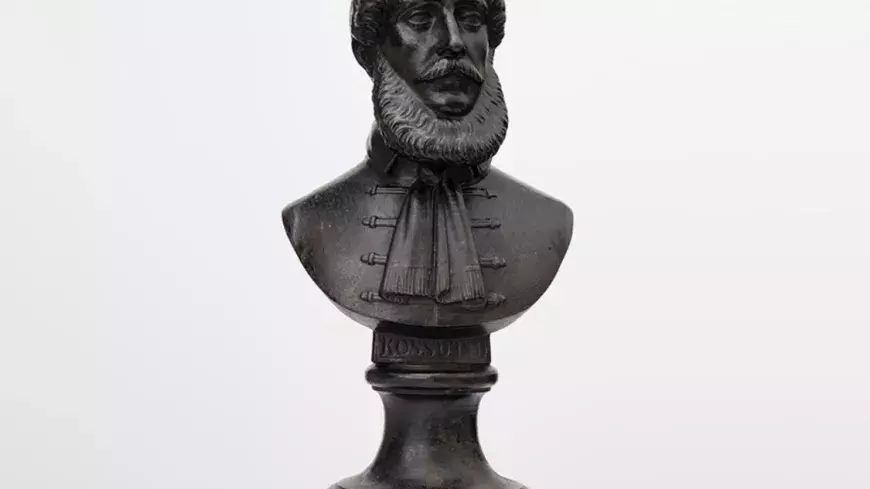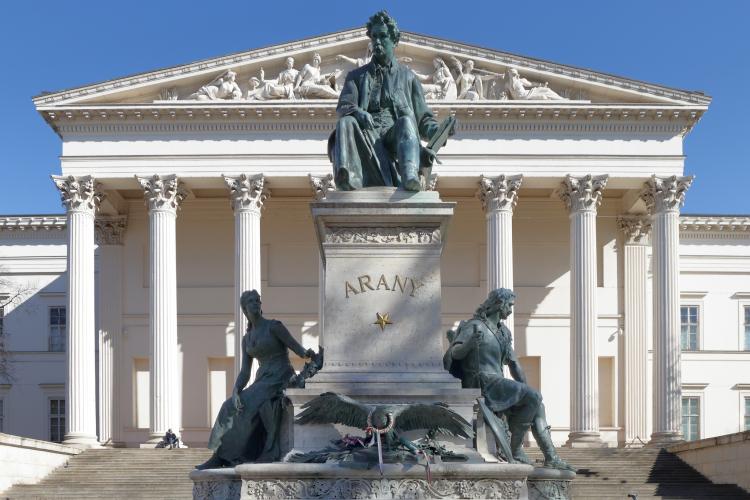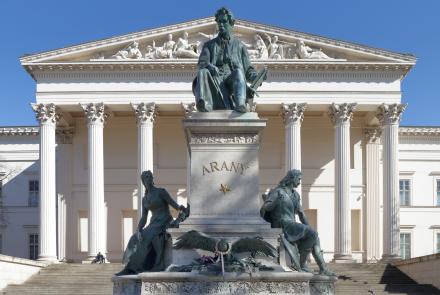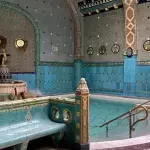The Curious Case of the National Museum's Hanged Statue
Budapest has countless museums and cultural institutions, that are packed full of historical treasures. It's an impossible task to tell the story of each and every one of them, but the Hungarian National Museum shared the adventurous story of one of their statues on display, which is also the topic of their upcoming lectures in the Museum Academy series.
The video featuring Historian Balázs Mészáros explains that in Budapest’s National Museum, there’s a special statue of Lajos Kossuth that was originally cast in iron in 1848, during the Hungarian War of Independence.
Lajos Kossuth was a Hungarian statesman, lawyer, and freedom fighter who led the country's revolution against Habsburg rule in 1848-49 and is considered a national hero for his role in advocating for Hungarian independence and democracy. Today even Budapest's Parliament building is located on the square named after him.

The litograph of Kossuth by Miklós Barabás served as the basis for the statue
This was the first statue ever made of Kossuth. It was created at the Munkács (present-day Ukraine) ironworks by sculptor András Schossel, based on a lithograph by painter Miklós Barabás. However, after the revolution was crushed, the Austrian authorities ordered these statues to be melted down, and very few managed to survived.
One of them, surprisingly, was saved in the most unexpected way—by an Austrian officer.
A certain Captain Brunner decided to humiliate Kossuth’s memory by hanging the statue in his office in Arad (present-day Romania). Arad also happens to be the city where in 1849 the leaders of the defeated Hungarian revolutuion were executed.
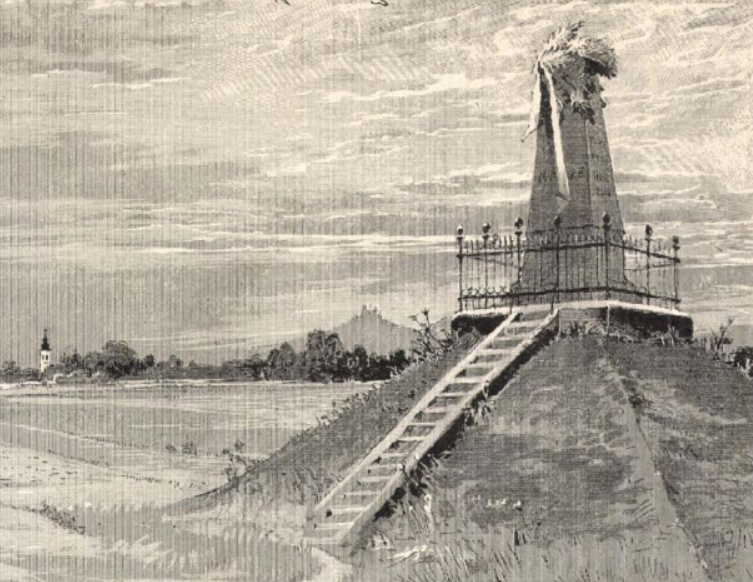
Execution place of the thirteen leaders of the revolution in Arad
Brunner saw the statue as a trophy of sorts. One day, a desperate Hungarian woman came to beg for her husband’s life—her husband being a soldier condemned to death. In a cruel joke, Brunner started swinging the statue back and forth, taunting her. But instead of breaking down, the woman did something unbelievable—she slapped him. Right across the face.
Brunner was so stunned by her courage that he didn’t punish her. Instead, he handed her the statue as a gift. Her family kept it safe for generations, until it finally found its way to the Hungarian National Museum, where it still stands today.
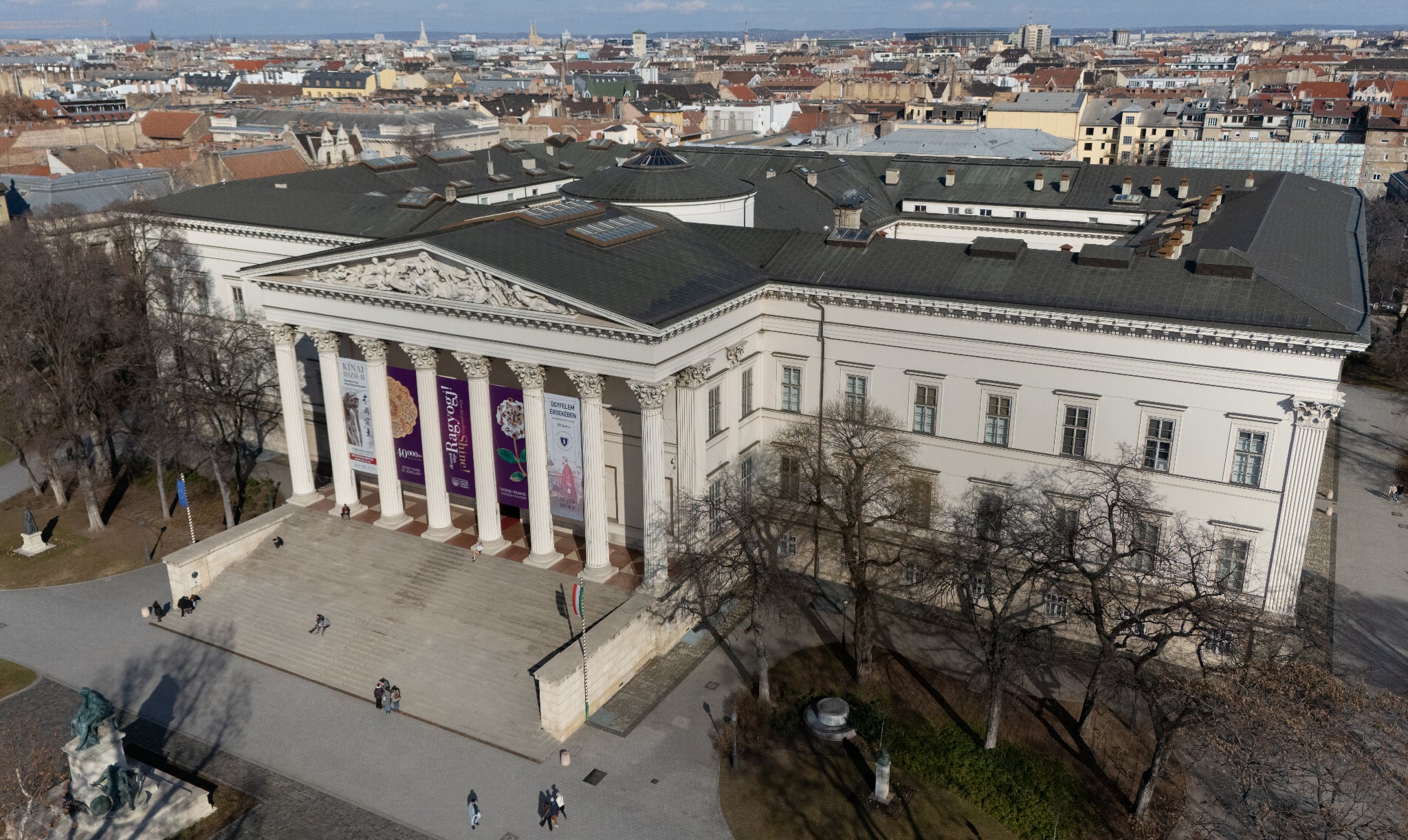
Building of the Hungarian National Museum
